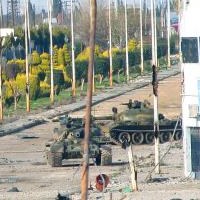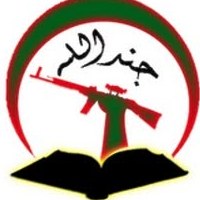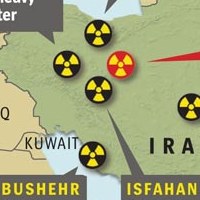![]()
Thu, Dec 15, 2011

Iranian President Mahmoud Ahmadinejad (l.) gestured toward a third-generation domestically built centrifuge for enriching uranium April 8, 2010. With him is Ali Akbar Salehi (r.), chief of Iran’s Atomic Energy Organization. The West's sanctions have not halted Iran's nuclear bomb program. (Photo by Vahid Salemi/AP)
Iran: all nuclear installations now underground
A DebkaFile report: “Iran reports all its nuclear installations now underground”.
Iran announced on Wednesday, Dec. 14, that it had completed the transfer of its nuclear facilities underground, including its uranium enrichment centrifuges, and that the Iranian nuclear program was now safe from US and Israeli attack. The Iranian Revolutionary Guards Passive Defense Division, Gholamreza Jalali, said: “Our vulnerability in the nuclear area has reached the minimum level.” And if circumstances demand it, he said, uranium enrichment facilities would be placed in more secure locations.
Israeli Defense Minister Barak has repeatedly warned that once it was buried in underground bunkers, Iran’s nuclear infrastructure could no longer be attacked; nor would it be possible to find out what was happening there. His meaning was that that no one would know when Iran started building nuclear bombs in deep underground chambers.
Then, Monday, Dec. 12, Deputy Prime Minister and Minister for Strategic Affairs Moshe Ya’alon said, “Iran will acquire military nuclear capability within months.”
DEBKAfile’s intelligence sources report that in the second part of his comment, the Iranian Guards official was referring to the first-generation P1 and P2 centrifuges which remain at the regular Natanz. It is the newer and faster IR2 and IR4 machines which are being moved to the new underground nuclear city at Fordo near Qom. When these advanced models have all been transferred to Fordo, Iran can start enriching the 20-percent grade uranium it has accumulated to 60 percent, a step before weapons grade.
This accumulated stock is sufficient for four or five nuclear bombs. Nothing but a decision by Supreme Leader Ayatollah Ali Khamenei stands between this and the final enrichment leap to the military level and the assembly of the first bomb.
Western and Israeli intelligence experts have assumed until now that Iran was held back by serious problems with the new centrifuges which arose from a shortage of the specialized aluminum alloys, tungsten-copper plates, tungsten metal powder and maraging steel for their blades, the key to smooth enrichment up to weapons-grade.
In recent weeks, US and Israeli officials have argued that Iran’s inability to manufacture these rare metals themselves or obtain them on international markets was delaying Tehran’s progress. This argument supported their claim that there was still time to stop the nuclear program before it produced a weapon.
But DEBKAfile’s intelligence sources now report exclusively that Iran has solved this problem. Since early November, North Korea has been sending the Islamic Republic consignments of the missing metals following a deal brokered by Chinese middlemen who also helped arrange their shipment. Tehran is already in receipt of the hundreds of tons of rare metals needed to keep its high-tech centrifuges spinning uninterrupted.
Western intelligence officials conclude that Iran deliberately exaggerated the explosion Sunday, Dec. 11 at a steel plant in the central Iranian town of Yazd intending to imply that the Americans or Israelis had conducted another covert attack on the production of special metals for Iran’s nuclear industry.
Iran hoped to mislead the West into believing that Iran was still stalled by lack of a regular supply of those metals, when in fact the shortage has been overcome and advanced uranium enrichment was racing ahead deep underground.



 RSS
RSS










Iran: all nuclear installations now underground | Middle East, Israel, Arab World, Southwest Asia, M http://t.co/pv1zP6x9
Iran: all nuclear installations now underground | Middle East, Israel, Arab World, Southwest Asia, M http://t.co/pv1zP6x9
[…] the nuclear area has reached the minimum level.” And if circumstances demand it, he said, uranium enrichment facilities would be placed in more secure locations. Iran Bushehr oblique […]